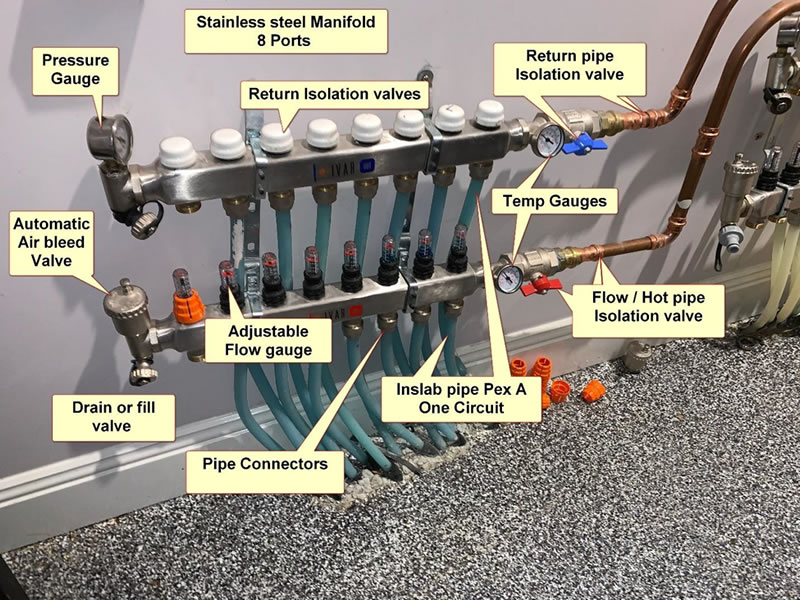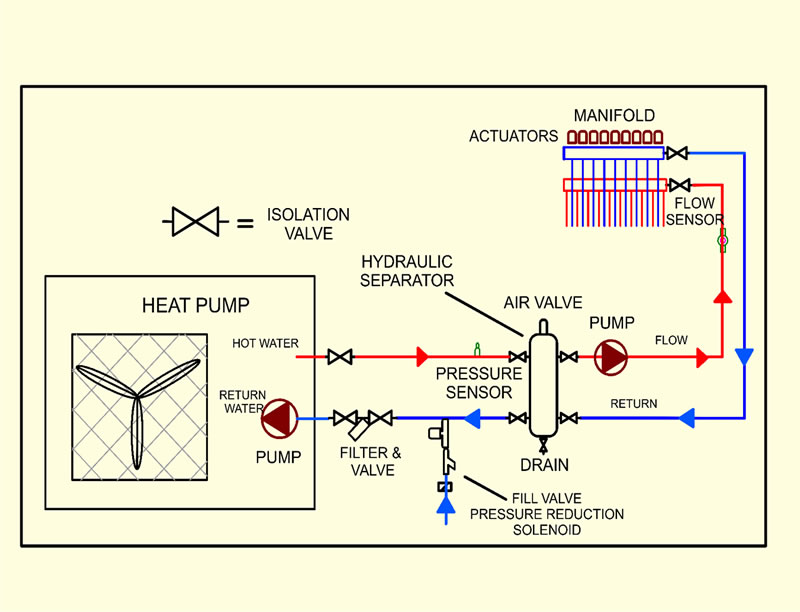HYDRONIC HEATING AND COOLING
Hydronic heating and cooling

Hydronic is using water as the medium to heat and more recently cool the house, or building.
The water is heated or cooled from a heat source (boiler, heat pump) which is distributed via pipes in the concrete slab and screeds or radiators throughout the home.
The heated water running in the slab is conducted through the concrete, with the concrete slab acting as a giant radiator, nothing like warm floors in the middle of winter. The pipes could also be distributed to radiators which radiates the heated water into the rooms.
It’s silent and clean, the most comfortable and popular form of heat around the world. Forced air can hold no match.
Main Components
Manifold: central location of all the circuit pipes in the concrete slab.
Circuit Pipes: The circuit pipes in the slab for each area or room; These pipes can be any colour and normally 16mm or ½” (internal) diameter, all must have an oxygen barrier.
Pex A: the most common with Oxygen barrier.
Pert: with Oxygen barrier not as good as Pex A, but still fine.
<>Pex B: not as common and more difficult to work with on installation.
Pex Al Pex: Not a good choice for Inslab heating, good for radiators: the Al stands for Aluminum, which is an oxygen barrier with two layers of Pex either side.
Main flow and return pipes: These pipes are either Pex A, Pex Al Pex, or Copper. Aim for 20 – 25mm internal diameter.
Heat Source: Gas Boiler, Wood Boilers, Pellet Boilers, waste oil or diesel boilers and Heat Pumps, both air to water and water to water for ground source heat pumps.
Heat pumps can also offer cooling and within Australia becoming ever more popular especially without natural gas.
Thermostat: You need some basic controls to turn the system on and off. Check Understanding Zoning for more detail on controls.

Hydronic advantages over Reverse cycle air conditioning

Reverse cycle has only two things going for it; its cheap to install and quick response times.
Force air is heating by convection, not a comfortable heat compared to conduction, the rooms feel stuffy in a short period.
The air quality over time has to decline as the ducts are never clean, once installed. This is a major concern for those with allergies, asthma.
Blowing air around the house or office is the perfect way to spread the love of viruses and germs.
They almost always are badly installed, ducts are squished, ducts are poorly fitted and often damaged overtime from trades working on the house.
The ducting is running in the coldest (or hotest) part of the house, the roof, an unconditioned space, the ducts have low insulation values.
The return vent makes it very hard to zone the house as this vent must always be open to other zones.
Moving air around the house increases outside air entering the building envelope, through door and window seals as the air pressure difference.
